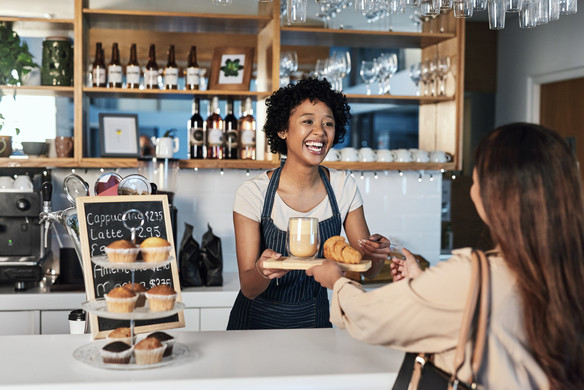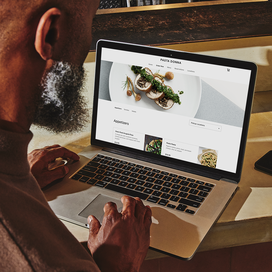Table of contents
Restaurant categories were once distinct — you could offer quick service, casual dining, or full service — and customers knew what to expect in terms of experience. Those categories have since blurred as restaurants have begun to experiment with hybrid concepts.
In 2020, many restaurants pivoted or changed their business models to support features like online ordering, takeout and delivery, and contactless payments, features typically associated with quick-service restaurants. While these may have started with prevailing COVID-19 restrictions, restaurants have since evolved further into multihyphenate brands, offering products and services outside their core offerings. According to the Square Future of Restaurants report, 90% of restaurants plan to add new revenue streams outside their core offerings in 2024. For restaurants that have already done so, owners report that 43% of their revenue comes from those channels.
Consumers are rewarding businesses that lean into the new standard restaurant experience. So, it should come as no surprise that many restaurants are exploring hybrid concepts, not only for revenue but as a response to changing consumer demands. If you are considering a hybrid model for your restaurant, grasping the key ideas and types of restaurant concepts will help you define the best strategy for your business.
Understanding the hybrid quick- and full-service restaurant models
What is a QSR, really? Quick-service restaurants, often abbreviated as QSRs, are designed to provide meals efficiently and at a lower cost, typically with counter service and minimal table service. Full-service restaurants, on the other hand, offer a more traditional dining experience with table service in a more relaxed setting. At the peak of the pandemic, when the goal was to limit physical interactions as much as possible, many full-service restaurants switched to or adopted quick-service elements, including adding options for delivery and reducing dining space.
However, current consumer patterns indicate that people don’t want to choose between one type of dining experience or another. Instead, they want the best of both worlds. They still want quality food and excellent service, but they also want restaurants to be flexible and offer quick-service and full-service options. For example, 25% of Gen Z — who will soon become the largest consumer segment — say options for ordering at a kiosk or using a QR code will increase their interest in a new restaurant. However, almost half of diners (48%) surveyed in the Square Future of Customers report say they’re likely to try a new restaurant if it offers in-person dining.
Restaurants are rising to the challenge by exploring the hybrid restaurant concept. Although the definition of a hybrid restaurant is continuously changing, as businesses execute the model in different ways, a hybrid restaurant usually blends elements of traditional dine-in service with quick-service offerings. Hybrid models blend the quick-service restaurant meaning while delivering the services of full-service restaurants. This model allows for speedy service for those in a hurry and a relaxed dining area for guests looking to enjoy a leisurely meal.
The most popular hybrid restaurant concepts
If you’re considering the hybrid concept for your restaurant, here are some of the typical implementations you may adopt:
1. Quick service by day, full service by night
In this model, restaurants offer counter service or grab-and-go meals for breakfast and lunch, then switch to full service for dinner. This style helps restaurants maximize their space and is particularly useful if you’re interested in capturing both daytime and nighttime business.
2. Virtual brands plus FSR
In this setting, the restaurant continues to run a traditional full-service brand but creates a separate virtual brand that offers online-only ordering and delivery for a specific food item. Meals for the virtual brand are prepared in the existing kitchen, but can only be ordered via the virtual brand’s website or third-party apps like Uber Eats and Grubhub. This helps you save on infrastructure.
In this model, you may link the new brand to your existing brand or float it as a fully independent brand. The latter requires more marketing since the virtual brand won’t be publicly connected to the original brand. Popular food items for virtual brands are chicken wings, pizza, and burgers because they perform well via takeout and delivery.
3. FSR and ghost kitchens
A ghost kitchen is also known by many other names, such as a delivery-only restaurant, virtual kitchen, shadow kitchen, commissary kitchen, cloud kitchen, or dark kitchen. It’s an off-premise kitchen facility, usually operated by a third party, that prepares food for takeout or delivery.
Ghost kitchens can serve a single restaurant or multiple brands. Ghost kitchens are usually adopted by restaurants looking to expand their service locations without investing in additional infrastructure. The restaurant continues to operate a full-service model in its primary locations but runs ghost kitchens for others.
Is a hybrid QSR/FSR model right for your restaurant?
Hybrid restaurants are trendy, but they are not for everyone. If you’re considering making the switch, here are some key things to consider:
1. Define your objectives.
Granted, running a hybrid restaurant has potential benefits, but it could also have significant drawbacks if your objectives are not clearly defined. Your customers may get confused if your offerings are not properly communicated, and this could negatively impact your brand.
Think through why you want to create a hybrid model and how you want the new brand, segments, or offerings to differ from your current ones. For example, if you already run a quick-service establishment, you may be interested in getting a piece of the evening business. Your objectives will determine the hybrid concept you adopt as well as your new positioning and branding.
2. Assess your current infrastructure.
When it comes to running a hybrid restaurant, your infrastructure matters, especially if you do not intend to take on a new lease. Does your current space have the capacity to serve additional streams? Can your current operations adapt to new processes and additional menus?
3. Thoroughly evaluate the costs.
Ultimately, execution comes down to finances. For example, if you decide to start a ghost kitchen, will your revenue offset the costs of paying the kitchen operators? If you’re creating additional service sections within your current space, what are the cost implications, and how quickly can you recoup those expenses? No matter the concept you choose, you’ll need to take a hard look at your numbers before you make the decision.
4. Choose the right technology.
It’s nearly impossible to successfully manage the dynamics of a hybrid restaurant without the technology that powers those multifaceted businesses. For example, if you create a virtual brand, you’ll need a solution that:
- Supports online ordering and integrates with your website or third-party apps
- Helps you streamline back- and front-of-house operations so it’s easy to use the same space and resources for both brands
- Syncs your menu both on-premises and online
- Consolidates online orders
Solutions like Square for Restaurants, an all-in-one POS, and Square Kitchen Display System (KDS) are designed to help you meet those needs. Square for Restaurants helps your team stay in sync and take and deliver orders seamlessly, whether you’re in full-service, fast-casual, or quick-service mode. All restaurant owners (100%) surveyed in the Square Future of Restaurants report use technology and automation to fill critical gaps in their business when they are not fully staffed, including managing orders placed through multiple channels. The bottom line is that you have to choose a technology that will make the hybrid model work for your business.
Hybrid QSR/FSR restaurants are likely here to stay. The hybrid businesses that will thrive are clear about their goals, prioritize consumer demands, and innovate relentlessly. When creating a hybrid restaurant, it’s important to properly evaluate your goals, drill down on the numbers, and choose the technology that helps you stay in full control of your operations. No matter the concept you choose, the overarching goal should remain the same: delivering outstanding service and dining experiences.
![]()











